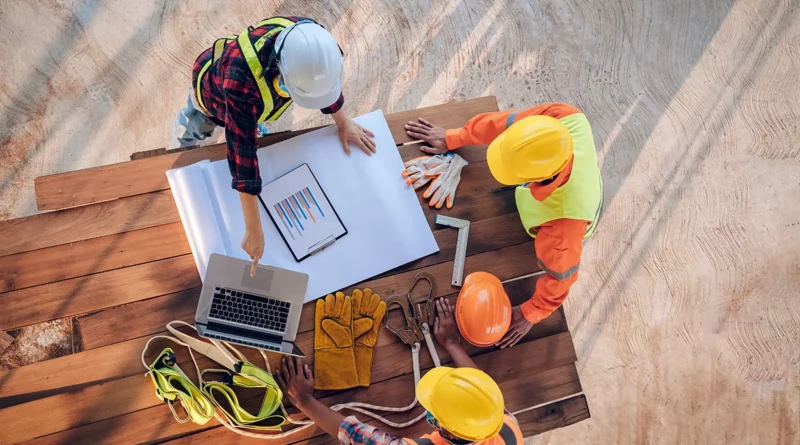What are popular design trends in new building projects?
Building a new home or commercial property is an exciting venture, but choosing the right design can be overwhelming. From architectural styles to interior finishes, the choices are endless. Whether you’re looking for sleek modernism or a cozy traditional feel, there are key design trends in residential & commercial new construction that can help you stay ahead of the curve. In this article, we’ll explore the latest trends in new building projects and how you can incorporate them into your own space.
Sustainable and Eco-Friendly Designs
In recent years, sustainability has become one of the most important factors in building design. People are increasingly aware of the need to reduce their carbon footprint and conserve resources. As a result, eco-friendly designs are on the rise. This includes the use of sustainable materials, such as bamboo flooring, recycled steel, and low-emission paints. Energy-efficient windows, insulation, and solar panels are also becoming standard features in many new buildings. Green roofs and walls are another innovative trend. These designs not only contribute to sustainability but also provide natural insulation, reduce stormwater runoff, and improve air quality. Many new building projects now include these eco-conscious features to appeal to environmentally-conscious buyers.
Open Concept Layouts
Gone are the days of closed-off rooms with limited space. Today’s new building projects are embracing open-concept designs, especially in residential homes. Open spaces create a sense of airiness and make smaller spaces feel larger. In open-concept layouts, the kitchen, living room, and dining area flow seamlessly into one another. This trend is especially popular in modern homes where simplicity and functionality are prioritized. The beauty of open-concept layouts lies in their versatility. It’s easy to modify these spaces to fit your needs. Whether you want a family-friendly area or a chic space for entertaining, an open layout offers endless possibilities.
Minimalism: Less Is More
Minimalism has become a dominant trend in the design world, especially in new buildings. The phrase “less is more” perfectly sums up this style. Minimalist designs focus on clean lines, simple shapes, and clutter-free spaces. In practice, this means using neutral color palettes, sleek furniture, and streamlined architecture. Minimalist homes are often filled with natural light and feature large windows that provide unobstructed views of the outdoors. The idea is to create a serene environment that promotes calm and relaxation. Minimalism is not just a design trend; it’s a lifestyle choice for those who value simplicity and elegance.
Smart Home Features
Technology continues to shape the way we live, and it’s no surprise that smart home features are becoming more common in new building projects. Smart home technology allows homeowners to control various aspects of their homes with a few taps on a smartphone or voice commands. Common smart home features include smart lighting systems, programmable thermostats, security cameras, and even voice-controlled appliances. The rise of the Internet of Things (IoT) means that homes are becoming more connected than ever before. For new building projects, incorporating these features is a great way to future-proof a home and provide convenience to its residents.
Natural Materials for a Warm Feel
Natural materials such as wood, stone, and metal are making a comeback in modern building designs. While polished concrete and glass were popular in past decades, today’s buildings embrace organic textures that create warmth and depth. Wood paneling, stone countertops, and raw metal finishes are becoming common choices for both interiors and exteriors. These materials not only add beauty and character to a building but also promote sustainability. Wood, for instance, is a renewable resource, and many natural materials are biodegradable, making them a smart choice for eco-friendly designs.
Flexible Spaces for Multi-Purpose Use
In today’s world, flexibility is key. Homeowners and business owners alike are seeking spaces that can serve multiple purposes. Flexible design allows rooms to transform and adapt as needed. For instance, a guest bedroom can double as a home office, or a basement could serve as both a recreation room and a guest suite. Incorporating movable partitions, fold-away furniture, and multifunctional spaces can make a building much more adaptable. This trend is especially popular in urban areas where space is limited, and people are looking to maximize every square foot.
Biophilic Design: Bringing the Outdoors In
Biophilic design is the concept of connecting people to nature by incorporating natural elements into building designs. This trend focuses on bringing the outdoors in, making nature an integral part of indoor spaces. Large windows, indoor plants, natural wood accents, and water features are common elements of biophilic design. This approach is believed to improve the well-being of the people who live or work in these spaces. Research has shown that exposure to nature reduces stress, increases productivity, and enhances overall mood. As a result, biophilic design has become a go-to choice for many new building projects, from homes to offices and public spaces.
Statement Architecture
Today’s architecture isn’t just about functionality; it’s about making a statement. Many new building projects are embracing bold, unique designs that stand out from the crowd. This can be seen in the use of unconventional shapes, striking facades, and dramatic rooflines. Architects are using creative techniques to turn buildings into works of art. Some buildings feature sculptural elements, while others incorporate artistic details like murals or metalwork. Statement architecture is all about creating a memorable first impression and making a lasting impact on the landscape.
Wellness-Focused Spaces
Health and wellness have become significant considerations in building design. As more people prioritize their well-being, there’s been a rise in wellness-focused spaces. These buildings often include features such as gyms, yoga studios, and meditation rooms. Incorporating wellness features into a building design also extends to the overall ambiance. Natural light, good ventilation, and the use of non-toxic materials all contribute to creating a healthy living environment. These spaces are designed to promote physical and mental well-being, offering residents a sanctuary from the stresses of daily life.
Customized and Personal Designs
Gone are the days of cookie-cutter homes and buildings. Today’s homeowners and business owners are seeking personalized spaces that reflect their individual tastes and lifestyles. Customization has become a significant trend, with many opting for unique finishes, layouts, and color schemes.] Whether it’s designing a home with custom cabinetry or choosing a commercial space with bespoke furnishings, personalized design adds a sense of ownership and uniqueness to a building. This trend is expected to continue growing as people seek to create spaces that are a true reflection of their personality.
Conclusion
The design trends in new building projects are constantly evolving, but sustainability, minimalism, and technological integration remain central to many modern designs. Whether you’re looking to build a home or a commercial space, embracing these trends can result in a more functional, stylish, and environmentally friendly building. By keeping these key elements in mind, you can create a space that is not only on-trend but also built to last.




